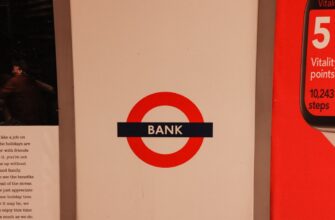Peer-to-peer (P2P) trading has revolutionized how users buy and sell Tether (USDT), the world’s largest stablecoin pegged 1:1 to the US dollar. The P2P USDT rate refers to the exchange value agreed upon between individual traders without intermediaries. Unlike centralized exchanges with fixed rates, P2P platforms allow users to set custom prices, creating dynamic market conditions where rates fluctuate based on supply, demand, and regional factors. Understanding these rates is crucial for maximizing returns and minimizing costs in crypto transactions.
Key Factors Influencing P2P USDT Rates
Several variables impact why USDT rates differ across P2P platforms:
- Supply and Demand Imbalances: Local scarcity of USDT buyers/sellers can cause premiums or discounts versus the $1 peg.
- Payment Method Risks: Bank transfers often offer better rates than riskier options like gift cards due to lower fraud potential.
- Geographical Arbitrage: Emerging markets with capital controls (e.g., Nigeria, Vietnam) frequently show 5-15% premiums over USD.
- Platform Fees: Exchanges like Binance P2P charge 0%-1% fees, indirectly affecting net rates.
- Market Volatility: During crypto bull runs, USDT demand surges, temporarily inflating P2P rates.
Strategies to Secure Optimal P2P USDT Rates
Follow these actionable steps to improve your exchange value:
- Multi-Platform Comparison: Check rates across Binance, Paxful, and LocalBitcoins simultaneously using aggregators like CoinMarketCap.
- Timing Tactics: Trade during regional business hours when liquidity peaks—Asian markets often show rate dips at UTC+8 midday.
- Volume Leverage: Negotiate 0.5%-2% better rates for trades exceeding $1,000 with established sellers.
- Payment Optimization: Use SEPA or local bank transfers for 0.1%-0.5% rate advantages over PayPal or Venmo.
- Reputation Building Maintain high trader ratings to access premium rate listings reserved for trusted users.
Risk Mitigation in P2P USDT Trading
While P2P offers rate flexibility, it introduces unique risks:
- Escrow Scams: Fraudsters may cancel trades after payment. Solution: Only release funds after platform confirmation.
- Payment Reversals: Chargeback-prone methods enable theft. Solution: Use irreversible options like bank wires.
- Rate Manipulation: Sellers may advertise false rates. Solution: Verify trade history and completion rates.
- Regulatory Uncertainty: Local restrictions can freeze transactions. Solution: Trade on KYC-compliant platforms like Binance.
P2P USDT Rates: Frequently Asked Questions
Q1: Why are P2P USDT rates higher than $1 in some countries?
A: High local demand, currency devaluation fears, and limited banking access create premiums—sometimes exceeding 20% in hyperinflation economies.
Q2: How often do P2P USDT rates change?
A: Rates update continuously based on live orders. Major shifts occur during market volatility or liquidity crunches.
Q3: Can I set my own P2P USDT rate?
A: Yes! Most platforms let sellers post custom rates. Buyers can also make counteroffers to negotiate better deals.
Q4: Are P2P rates safer than exchange rates?
A: Not inherently—P2P carries counterparty risk. However, escrow protection on reputable platforms reduces danger significantly.
Q5: Do P2P rates include transaction fees?
A: Usually not. Always calculate net rate by subtracting platform fees (typically 0.1%-1%) from the advertised price.
Mastering P2P USDT rates requires vigilance but rewards users with superior pricing control. By monitoring market dynamics, selecting secure payment rails, and leveraging platform tools, traders can consistently access rates 1%-3% better than centralized exchanges—turning volatility into opportunity.








